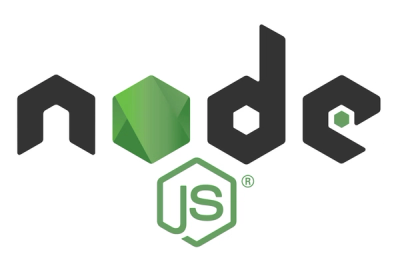
Security News
ECMAScript 2025 Finalized with Iterator Helpers, Set Methods, RegExp.escape, and More
ECMAScript 2025 introduces Iterator Helpers, Set methods, JSON modules, and more in its latest spec update approved by Ecma in June 2025.
matrix-synapse-ldap3
Advanced tools
Allows synapse to use LDAP as a password provider.
This allows users to log in to synapse with their username and password from an
LDAP server. There is also ma1sd <https://github.com/ma1uta/ma1sd>_ (3rd party)
that offers more fully-featured integration.
deb packages <https://matrix-org.github.io/synapse/latest/setup/installation.html#matrixorg-packages>_ and
docker images <https://matrix-org.github.io/synapse/latest/setup/installation.html#docker-images-and-ansible-playbooks>_ from matrix.org.pip install -U pip.pip install matrix-synapse-ldap3.Example Synapse configuration:
.. code:: yaml
modules: - module: "ldap_auth_provider.LdapAuthProviderModule" config: enabled: true uri: "ldap://ldap.example.com:389" start_tls: true base: "ou=users,dc=example,dc=com" attributes: uid: "cn" mail: "mail" name: "givenName" #bind_dn: #bind_password: #filter: "(objectClass=posixAccount)" # Additional options for TLS, can be any key from https://ldap3.readthedocs.io/en/latest/ssltls.html#the-tls-object #tls_options: # validate: true # local_certificate_file: foo.crt # local_private_key_file: bar.pem # local_private_key_password: secret
If you would like to specify more than one LDAP server for HA, you can provide uri parameter with a list. Default HA strategy of ldap3.ServerPool is employed, so first available server is used.
.. code:: yaml
modules: - module: "ldap_auth_provider.LdapAuthProviderModule" config: enabled: true uri: - "ldap://ldap1.example.com:389" - "ldap://ldap2.example.com:389" start_tls: true base: "ou=users,dc=example,dc=com" attributes: uid: "cn" mail: "email" name: "givenName" #bind_dn: #bind_password: #filter: "(objectClass=posixAccount)" #tls_options: # validate: true # local_certificate_file: foo.crt # local_private_key_file: bar.pem # local_private_key_password: secret
If you would like to enable login/registration via email, or givenName/email binding upon registration, you need to enable search mode. An example config in search mode is provided below:
.. code:: yaml
modules: - module: "ldap_auth_provider.LdapAuthProviderModule" config: enabled: true mode: "search" uri: "ldap://ldap.example.com:389" start_tls: true base: "ou=users,dc=example,dc=com" attributes: uid: "cn" mail: "mail" name: "givenName" # Search auth if anonymous search not enabled bind_dn: "cn=hacker,ou=svcaccts,dc=example,dc=com" bind_password: "ch33kym0nk3y" #filter: "(objectClass=posixAccount)" #tls_options: # validate: true # local_certificate_file: foo.crt # local_private_key_file: bar.pem # local_private_key_password: secret
Alternatively you can also put the bind_password of your service user into its
own file to not leak secrets into your configuration:
.. code:: yaml
modules: - module: "ldap_auth_provider.LdapAuthProviderModule" config: enabled: true # all the other options you need bind_password_file: "/var/secrets/synapse-ldap-bind-password"
Please note that every trailing \n in the password file will be stripped automatically.
If the active_directory flag is set to true, an Active Directory forest will be
searched for the login details.
In this mode, the user enters their login details in one of the forms:
<login>/<domain><domain>\<login>In either case, this will be mapped to the Matrix UID <login>/<domain> (The
normal AD domain separators, @ and \, cannot be used in Matrix User Identifiers, so
/ is used instead.)
Let's say you have several domains in the example.com forest:
.. code:: yaml
modules: - module: "ldap_auth_provider.LdapAuthProviderModule" config: enabled: true mode: "search" uri: "ldap://main.example.com:389" base: "dc=example,dc=com" # Must be true for this feature to work active_directory: true # Optional. Users from this domain may log in without specifying the domain part default_domain: main.example.com attributes: uid: "userPrincipalName" mail: "mail" name: "givenName" bind_dn: "cn=hacker,ou=svcaccts,dc=example,dc=com" bind_password: "ch33kym0nk3y"
With this configuration the user can log in with either main\someuser,
main.example.com\someuser, someuser/main.example.com or someuser.
Users of other domains in the example.com forest can log in with domain\login
or login/domain.
Please note that userPrincipalName or a similar-looking LDAP attribute in the format
login@domain must be used when the active_directory option is enabled.
matrix-synapse-ldap3 logging is included in the Synapse homeserver log
(typically homeserver.log). The LDAP plugin log level can be increased to
DEBUG for troubleshooting and debugging by making the following modifications
to your Synapse server's logging configuration file:
handlers.file.level to DEBUG:.. code:: yaml
handlers: file: # [...] level: DEBUG
loggers section:.. code:: yaml
loggers: # [...] ldap3: level: DEBUG ldap_auth_provider: level: DEBUG
Finally, restart your Synapse server for the changes to take effect:
.. code:: sh
synctl restart
FAQs
An LDAP3 auth provider for Synapse
We found that matrix-synapse-ldap3 demonstrated a healthy version release cadence and project activity because the last version was released less than a year ago. It has 8 open source maintainers collaborating on the project.
Did you know?

Socket for GitHub automatically highlights issues in each pull request and monitors the health of all your open source dependencies. Discover the contents of your packages and block harmful activity before you install or update your dependencies.

Security News
ECMAScript 2025 introduces Iterator Helpers, Set methods, JSON modules, and more in its latest spec update approved by Ecma in June 2025.

Security News
A new Node.js homepage button linking to paid support for EOL versions has sparked a heated discussion among contributors and the wider community.

Research
North Korean threat actors linked to the Contagious Interview campaign return with 35 new malicious npm packages using a stealthy multi-stage malware loader.